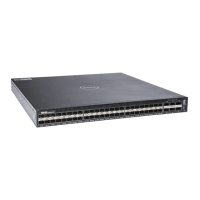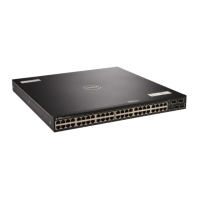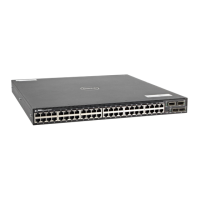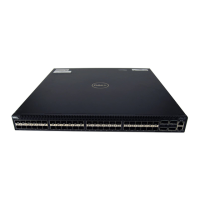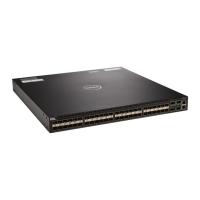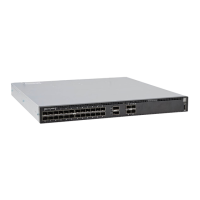Configuring ETS in a DCB Map
A switch supports the use of a DCB map in which you configure enhanced transmission selection (ETS)
setting. To configure ETS parameters, you must apply a DCB map on an interface.
ETS Configuration Notes
ETS provides a way to optimize bandwidth allocation to outbound 802.1p classes of converged Ethernet
traffic. Different traffic types have different service needs. Using ETS, you can create groups within an 802.1p
priority class to configure different treatment for traffics with different bandwidth, latency, and best-effort
needs.
NOTE: You can configure only three priority groups in the S4048T-ON platform.
When you configure ETS in a DCB map:
• The DCB map associates a priority group with a PFC operational mode (on or off) and an ETS scheduling
and bandwidth allocation. You can apply a DCB map on multiple egress ports.
• Use the ETS configuration associated with 802.1p priority traffic in a DCB map in DCBx negotiation with
ETS peers.
• Traffic in priority groups is assigned to strict-queue or weighted round-robin (WRR) scheduling in an ETS
configuration and is managed using the ETS bandwidth-assignment algorithm. Dell Networking OS de-
queues all frames of strict-priority traffic before servicing any other queues. A queue with strict-priority
traffic can starve other queues in the same port.
• ETS-assigned bandwidth allocation and strict-priority scheduling apply only to data queues, not to
control queues.
• Dell Networking OS supports hierarchical scheduling on an interface. The control traffic on Dell
Networking OS is redirected to control queues as higher priority traffic with strict priority scheduling.
After the control queues drain out, the remaining data traffic is scheduled to queues according to the
bandwidth and scheduler configuration in the DCB map. The available bandwidth calculated by the ETS
algorithm is equal to the link bandwidth after scheduling non-ETS higher-priority traffic.
• The configuration of bandwidth allocation and strict-queue scheduling is not supported at the same
time for a priority group.
• Bandwidth assignment: By default, equal bandwidth is assigned to each dot1p priority in a priority
group. To configure the bandwidth assigned to the port queues associated with dot1p priorities in a
priority group, use the bandwidth percentage parameter. The sum of the bandwidth allocated to all
priority groups in a DCB map must be 100% of the bandwidth on the link. You must allocate at least 1%
of the total bandwidth to each priority group.
• Scheduling of priority traffic: dot1p priority traffic on the switch is scheduled to the current queue
mapping. dot1p priorities within the same queue must have the same traffic properties and scheduling
method.
• ETS configuration error: If an error occurs in an ETS configuration, the configuration is ignored and the
scheduler and bandwidth allocation settings are reset to the ETS default value: 100% of available
bandwidth is allocated to priority group 0 and the bandwidth is equally assigned to each dot1p priority.
Data Center Bridging (DCB) 315
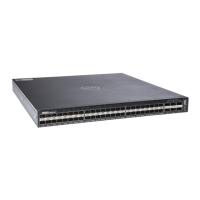
